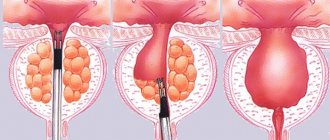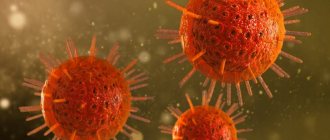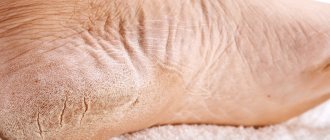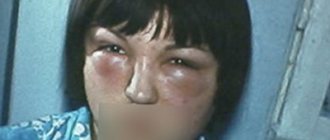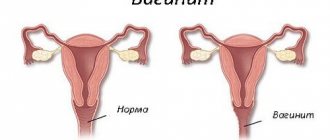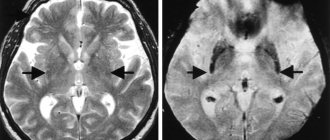Many people mistakenly believe that thrush is an exclusively female disease that does not occur in men. Unfortunately, this is not the case, and it can be found in both the fair half of humanity and its stronger side. The only difference is that in women it occurs much more often, but the treatment methods are approximately the same. How is thrush treated in men?
Causes of thrush in men
The causes of candidiasis in men are different, but all one way or another lead to the proliferation of the Candida fungus:
- weak immunity;
- lack of hygiene;
- as a result of unprotected sexual intercourse;
- long-term use of medications/antibiotics;
- sudden change in climatic conditions;
- presence of depression, stress;
The cause may also be a dysfunction of the intestine, as well as its microflora due to damage to the mucous membrane and the development of an inflammatory reaction.
Diagnosis and treatment
Thrush can be identified by the main symptoms of the disease, but a similar clinical picture is observed in other diseases, so only a doctor can make a final diagnosis.
Important: thrush does not go away on its own; the disease must be treated.
To make a diagnosis, laboratory – bacteriological and microscopic – studies are carried out. After deciphering the test results, the doctor prescribes a course of antifungal therapy.
The basis for diagnosis is the presence of fungal elements in the collected biomaterial. Bacteriological culture analysis allows you to determine the type and genus of fungi. This is necessary in order to correctly select antimycotic (antifungal) drugs.
Typically, topical medications are prescribed for treatment - creams and ointments that suppress pathogenic microorganisms. If such therapy is ineffective, the doctor prescribes general medications.
Fluconazole
- Active against Candida fungus;
- Indicated for vaginal candidiasis, cryptococcal meningitis, coccidioidomycosis, invasive candidiasis;
- Indicated for mucous candidiasis, dermatomycosis, dermatophytosis of the nails.
More details
THERE ARE CONTRAINDICATIONS. BEFORE USE, READ THE INSTRUCTIONS CAREFULLY OR CONSULT A DOCTOR
What type of thrush does it have in men?
Candidiasis in men most often appears on the head of the penis, causing irritation, pathological discharge and redness. Thrush often occurs in men with uncircumcised foreskin. In this case, the fungus receives more favorable conditions for life and reproduction. When candidiasis occurs, characteristic signs are observed - unpleasant itching and the appearance of a white coating on the mucous membrane. You can determine the disease yourself; you just need to know what it looks like on your underwear. Thrush leaves a thick white or yellow coating on panties.
Personal hygiene and nutrition
Thrush takes a long time to cure
One of the main causes of thrush is poor personal hygiene, which leads to the formation of an environment on the mucous membranes and skin that is very attractive to bacteria, fungi and microbes. Candida fungus is no exception. This fungus will appear either as a rash in the mouth or around the lips. As for personal hygiene, it is recommended for men to:
- Do not use shower gels, especially those containing other chemicals.
- Do not wash the head of your penis with soap
- Constantly wash the “foreskin”. Moreover, this must be done carefully so as not to damage the skin.
- After taking a shower or bath, dry yourself thoroughly with a towel and put on clean, loose and dry underwear, as a damp environment is an ideal place for breeding
Treatment for men is much faster than for women, this is due to many factors.
Manifestation of thrush in men
The appearance of characteristic signs of the disease in men is determined by the location of the lesion. If candidiasis appears on the skin, blisters and redness form, and on the mucous membranes - a type of infectious lesion.
The main symptoms of thrush in men are:
- unpleasant sensation of burning and itching;
- swelling of the penis appears;
- pathological discharge with an unpleasant odor appears;
- pathological secretion during urination, similar in appearance to seminal fluid;
- pain and discomfort during sexual intercourse;
The disease has an incubation period, and diagnosis and treatment depend on its duration. Most often this period lasts 2-3 weeks. During this time, symptoms may not appear, but the fungi are already multiplying in the body.
Digestion and thrush
Digestive problems can lead to the development of many diseases, and thrush is no exception. Many people wonder how thrush and how the stomach works can be connected. In fact, everything is interconnected, and if there are malfunctions in the digestive system, then, as a rule, other organs will malfunction. This will happen not because the food is poorly digested, but because it is poorly absorbed. And poorly digested food means a lack of vitamins and microelements, which are so necessary for the normal functioning of all cells.
That is why, in order to avoid weakening of the immune system, it is necessary to adhere to the principles of a healthy diet and try to eat only healthy foods. Due to the fact that these types of processes are related to each other, a man who is being treated for thrush is recommended to follow a special diet, thanks to which the intestinal microflora will be restored and he will be able to work normally.
Treatment of thrush in men
Treatment of candidiasis is always completely individual. The course of therapy is prescribed only by a urologist or dermatovenerologist. He assesses the patient’s medical history, age and lifestyle, and then prescribes the necessary treatment. It is strictly prohibited to treat candidiasis at home without going to the doctor. This can lead to complications.
To make a final diagnosis, the patient must take a smear to examine the bacterial flora. In addition to this, several more tests may be prescribed:
- donating blood and genital swabs;
- determination of blood glucose levels;
- blood for HIV;
- general blood and urine analysis.
In case of candidiasis due to other reasons, the necessary treatment is required from highly specialized specialists. If no other pathologies are found, a course of therapy is prescribed and the patient is sent home for treatment.
Men get sick 4 times less often than women, so the choice of drugs for the stronger half of humanity is much smaller. For local treatment, antifungal ointments are used, and tablets that kill the fungus are taken orally. Among the ointments one can highlight pimafucin, clotrimazole, nystatin and others.
What drugs are used to treat the disease?
To overcome this disease, the patient is prescribed antifungal drugs. They can be in the form of ointments or tablets, the ingestion or external use of which can regulate the number of pathogenic microorganisms.
The most commonly used drugs are based on the following substances:
- Miconazole. It comes in the form of a spray or cream. When applied, it disrupts the integrity of various pathogenic microorganisms.
- Ketoconazole. Presented in the form of creams, sprays, tablets. A decrease in the fungal population occurs due to a destructive effect on the biosynthesis of some components of the fungal cell membrane.
- Econazole It comes in the form of creams. It affects the lipid structure of the fungal membrane, having a bactericidal and fungicidal effect.
- Clotrimazole. Presented in the form of creams, ointments and solutions. It has a positive effect on yeast and mold fungi, kills gram-negative and gram-positive bacteria, dermatophytes.
Complications
Lack of timely treatment can lead to disruption of the structure of the urethral mucosa, which will complicate the process of urination. The long course of the disease reduces the sensitivity of nerve endings, which leads to loss of pleasure from sexual intercourse. It is much more difficult for a man to achieve orgasm, against the background of which libido disappears and sexual dysfunction may develop.
To avoid consequences, you should consult a doctor immediately after detecting symptoms of candidiasis and follow the treatment recommendations prescribed by a specialist.
Important: traditional methods are extremely ineffective in treating fungal infections. Neglecting the methods of official medicine aggravates the course of the disease and leads to the development of complications.
Rules to follow during treatment
During the therapy period, it is necessary to avoid sexual intercourse so as not to provoke the development of the disease. If possible, you should stop smoking and not drink alcoholic beverages. Avoid hypothermia and stress.
To reduce symptoms, it is recommended to choose loose underwear and clothing, and ensure that the groin area remains dry.
Nutrition:
- Eliminate sugar, fast carbohydrates, yeast and other fermentation products: they contribute to the development of fungal forms.
- Add fermented milk products with live cultures, whole grains, fresh and thermally processed vegetables and fruits to your diet.
Compliance with the diet will strengthen the body's protective functions and shorten the period of the disease, and the formation of healthy eating habits will eliminate the risk of relapse.
Fluconazole - instructions for use
The capsules are swallowed with water. Patients usually ask how to take it - before or after meals? In this case it does not matter, food does not affect bioavailability.
- Chronic atrophic candidiasis of the oral cavity when wearing dentures is prescribed in a dose of 50 mg 1 time / day. for 2 weeks in combination with local antiseptic treatment.
- Acute vaginal candidiasis, balanitis, complicated by fungi of the genus Candida, Fluconazole is prescribed once orally in a dose of 150 mg. To prevent relapses of vaginal candidiasis, use 150 mg every three days - a total of 3 doses (on the 1st, 4th and 7th day), then 150 mg once a week for maintenance. Maintenance therapy, if necessary, can be carried out for up to 6 months.
- Dermatomycoses. Skin infections, including dermatophytosis of the feet, trunk, groin area, for candidal infections, the dose is 150 mg once a week or 50 mg once a day. The duration of treatment is usually 2-4 weeks; for foot infections, therapy up to 6 weeks is possible.
- Lichen versicolor - 300-400 mg 1 time/week for 1-3 weeks or 50 mg 1 time per day for 2-4 weeks (depending on the regimen, the patient buys a dosage of 150 mg or 50 mg).
- Nail fungus (onychomycosis) - 150 mg 1 time/week, treatment should continue until the infected nail is replaced with a healthy one. This may take several months.
Can Fluconazole be used during breastfeeding and pregnancy?
The use of the drug during pregnancy should be avoided, with the exception of severe or life-threatening systemic fungal infections, when the expected benefit of therapy for the mother outweighs the possible risk to the fetus.
Women of childbearing age should also use reliable methods of contraception during treatment with Fluconazole and for at least a week after taking the last dose. Since there is information about cases of spontaneous abortion and the appearance of congenital pathologies in children whose mothers received Fluconazole at a dose of 150 mg once or repeatedly in the first trimester of pregnancy.
When pregnant women take increased doses for a long time in the first trimester, the number of defects in infants also increases: curvature of the femurs, impaired formation of the cranial vault, brachycephaly, impaired development of the facial part of the skull, cleft palate, thinning and elongation of the ribs, arthrogryposis and congenital heart defects.
Fluconazole passes into breast milk, so use during breastfeeding is prohibited.
